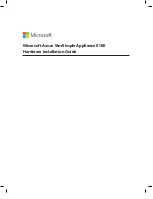
112
NAT address
An IP address for translation, which can be manually specified or dynamically allocated. The address in
the external network must be routable from the NAT address.
NAT entry
An entry recording the translation between a private and a public address on a NAT device. For more
information, see "
NAT types
Traditional NAT
Traditional NAT enables hosts in a private network to access hosts in the external network. Traditional
NAT allows outbound sessions from the private network.
NAT is configured on the interface that connects the public network. Source IP addresses of outgoing
packets and destination IP addresses of incoming packets are translated on the NAT interface.
Bidirectional NAT
NAT translates the source and destination IP addresses of a packet at the same time when the packet
passes through the NAT device. Bidirectional NAT is performed on incoming packets on the receiving
interface and on outgoing packets on the sending interface.
Bidirectional NAT is applied when source and destination addresses overlap.
Twice NAT
Twice NAT translates the destination IP address on the receiving interface, and translates the source IP
address on the sending interface. The receiving and sending interfaces are both NAT interfaces.
Twice NAT implements access between VPNs with overlapping address.
Easy IP
Easy IP uses the IP address of an interface on the device as the NAT address. The IP address of the
interface is obtained through DHCP or PPPoE. To implement Easy IP, you can specify an interface instead
of a NAT address.
NAT translation control
NAT translation control enables the device to translate only addresses matching a specific rule.
You can configure ACL-based NAT to achieve NAT translation control. NAT uses only the match criteria
of the source IP address, source port number, destination IP address, destination port number, transport
Summary of Contents for MSR 2600 Series
Page 6: ...We appreciate your comments...
Page 33: ...18 AC vlan1 quit...
Page 118: ...103...
















































